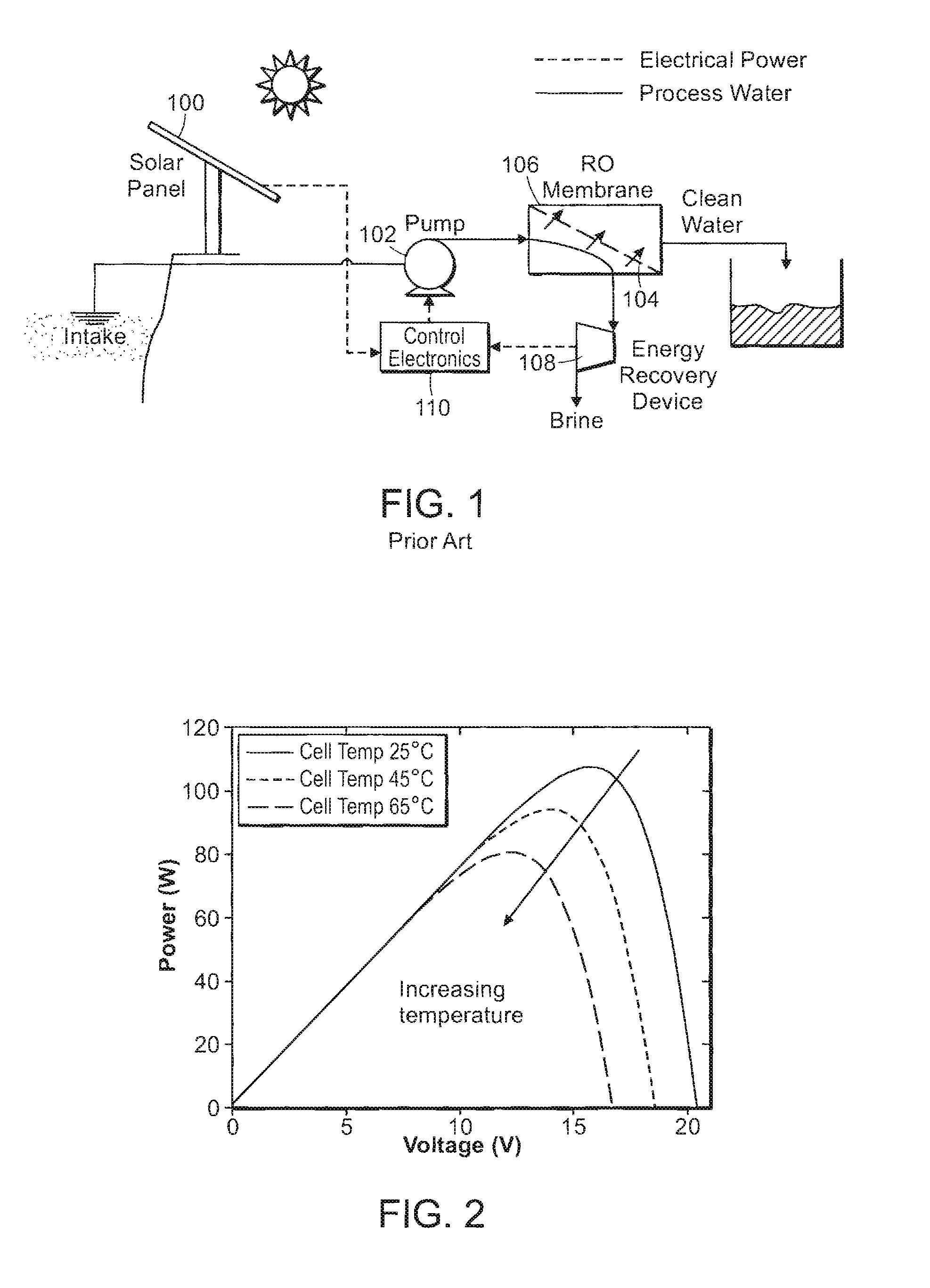Photovoltaic reverse osmosis system with thermal management
- Summary
- Abstract
- Description
- Claims
- Application Information
AI Technical Summary
Benefits of technology
Problems solved by technology
Method used
Image
Examples
Embodiment Construction
[0022]Solar panels and reverse osmosis membranes possess complementary characteristics that can be exploited to improve the overall system efficiency. Numbers in brackets refer to the references included herewith, the contents of all of which are incorporated herein by reference in their entirety. FIG. 2 shows the effect of increasing the solar panel temperature on the electrical power produced. The solar panel conversion efficiency decreases with increasing temperature [1], for the same amount of incoming solar radiation. Therefore, cooling the solar panel will increase the electrical energy produced.
[0023]FIG. 3 shows the effect of increasing the feed water temperature on the energy required for the RO to produce a given amount of fresh water for a given pump pressure. As the temperature of the feed water increases, the amount of energy required to desalinate water decreases, despite increasing the osmotic pressure. This occurs since the membrane permeability increases with increa...
PUM
| Property | Measurement | Unit |
|---|---|---|
| Temperature | aaaaa | aaaaa |
| Temperature | aaaaa | aaaaa |
| Volume | aaaaa | aaaaa |
Abstract
Description
Claims
Application Information
 Login to View More
Login to View More - R&D
- Intellectual Property
- Life Sciences
- Materials
- Tech Scout
- Unparalleled Data Quality
- Higher Quality Content
- 60% Fewer Hallucinations
Browse by: Latest US Patents, China's latest patents, Technical Efficacy Thesaurus, Application Domain, Technology Topic, Popular Technical Reports.
© 2025 PatSnap. All rights reserved.Legal|Privacy policy|Modern Slavery Act Transparency Statement|Sitemap|About US| Contact US: help@patsnap.com



